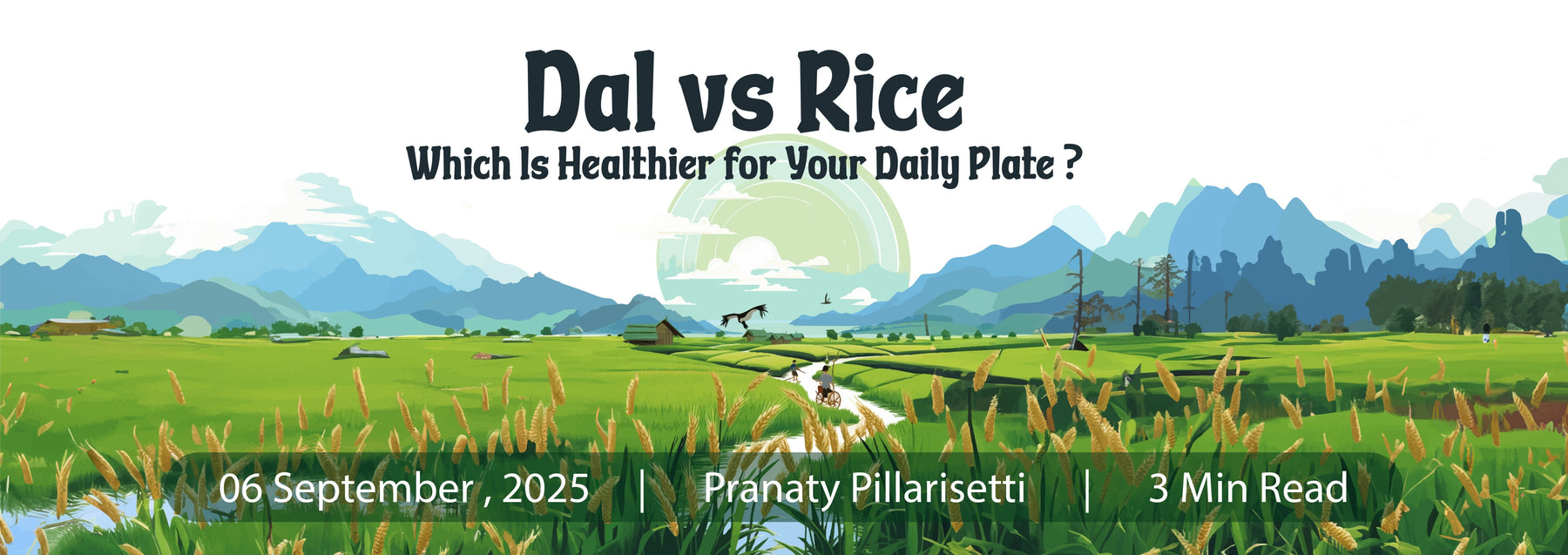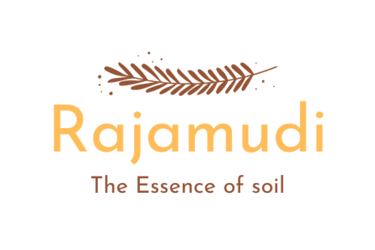
Dal vs Rice: Which Is Healthier for Your Daily Plate?
Tradition Meets Nutrition: The Real Story Behind Dal and Rice
For generations, every Indian meal has carried two essentials: a steaming bowl of dal and a serving of rice. To some, it’s comfort food. To others, it’s culture. But along the way we forgot to notice that this pairing isn’t just tradition, it’s nutrition at its smartest. Dal and rice balance each other out in ways modern science now praises but our ancestors already knew.
Still, the question lingers, especially for today’s health-conscious eater: If you had to choose, is dal healthier than rice, or is rice the real hero of your plate?
The Nutrition Puzzle: Dal vs Rice
To really answer the dal vs rice debate, we need to step back and look at what each brings to your plate.
Dal, whether it’s Toor, Moong, Masoor, or Urad is often called the plant-based protein powerhouse. Every spoonful delivers protein, fibre, iron, folate, and micronutrients, making it indispensable for vegetarians and vegans. But there’s a catch: dal alone is not a complete protein. It lacks methionine, one of the nine essential amino acids your body can’t make on its own. So, while dal builds strength, it can’t finish the nutritional job alone.
On the other hand, rice steps in with what dal is missing. As a whole grain, rice is rich in carbohydrates that fuel energy, light on digestion, and naturally soothing to the stomach. More importantly, rice provides methionine, the very amino acid that dal lacks. Yet, rice itself has a gap too: it misses lysine, which dal so generously supplies.
When you see them this way, dal and rice stop looking like rivals and start to resemble partners. Each one fills the gaps of the other, creating a complete protein profile that rivals what you’d get from animal foods. That’s why across cultures, from Indian thalis to Latin American beans with rice, the combination has stood the test of time. It isn’t just tradition. Its nutritional logic - centuries old, yet still backed by modern science.
The Daily Plate: How Much Dal and Rice Do You Really Need?
It’s one thing to know that dal and rice are better together. But how do you actually bring that science onto your plate every day? Nutritionists often recommend thinking of your thali as a circle of balance: grains for energy, pulses for protein, vegetables for fibre and micronutrients, and healthy fats to round it out.
Take a look at the plate chart below, it shows exactly how these proportions come together in a simple, everyday meal.

This is where dal and rice shine. A ladle of dal provides plant-based protein and fiber, while a katori of rice adds steady energy and comfort. Add a generous helping of seasonal vegetables and a drizzle of Rajamudi Organics Desi Cow Ghee or Cold-pressed Oil, and you’ve recreated the perfect balance that traditional Indian meals have followed for centuries.
Why Organic Dal and Rice Matter
Here’s where the conversation goes deeper. Sure, dal and rice together give you a complete protein but that’s not it. What really matters is the quality of that protein. Lentils and pulses grown conventionally often carry invisible baggage: pesticide residues, depleted soils, and lower micronutrient density. So while you may be eating the right foods, you aren’t necessarily getting the full benefit your body deserves.
This is where organic farming makes all the difference. When dal is grown in living soil nourished by compost, crop rotation, and biodiversity, the grains themselves become richer. They hold onto more minerals, offer cleaner nutrition, and support the health of farmers and ecosystems along the way.
That’s why choosing organic dal and rice isn’t just a lifestyle decision; it’s a way to ensure your plant-based protein is complete in every sense nutritionally, ethically, and environmentally.
For anyone asking, “Is it important for lentils to be organic?” → Absolutely. Lentils absorb soil minerals deeply. If the soil is sprayed with chemicals, those residues end up in your meal.
An Indian Perspective: Why This Matters for Your Daily Thali
In India, dal and rice are more than food, they’re the backbone of our age-old recipes. But in today’s times, the quality of these staples has changed.
This is why choosing organic dals and heritage rice matters in India today. They aren’t just about taste or tradition; they’re about eating food as it was meant to be: rich in nutrients, free from chemical residues, and better for both farmers and the soil.
At Rajamudi Organics, we bring back these staples in their purest form, so your everyday dal chawal remains the comfort food you love while also nourishing you in the right way.
So, Dal or Rice? The Final Verdict
Neither wins. The winner is the combination.
And when they’re organic, you’re also fueling the soil, supporting farmers, and saying yes to a healthier planet.
Your daily plate doesn’t have to choose sides. Think of it like a drama → rice is the stage, dal is the hero, and together they create the timeless dish that India swears by.
So, the next time someone asks, “Dal vs rice, which is healthier?” - smile, and say:
“Both, if they’re organic”
Explore our collection of organic dals and heritage rice at Rajamudi Organics and bring home the tradition of complete, clean protein

